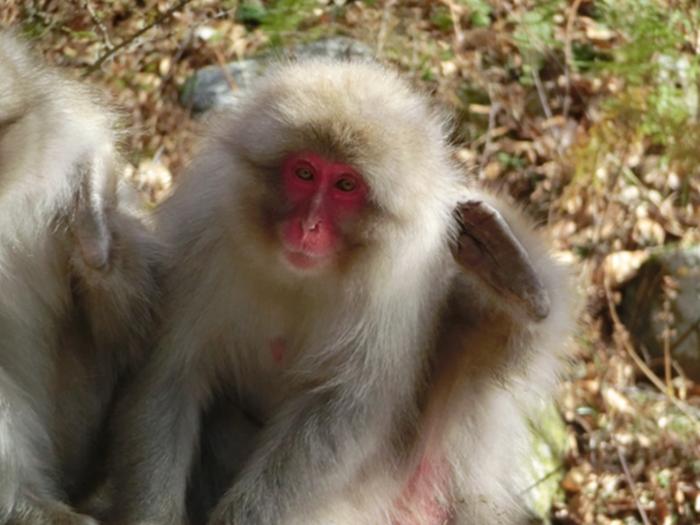
In the intricate social world of Japanese macaques, understanding their behavioral responses to stress becomes vital for comprehending their overall welfare and social dynamics. Recent observational research has successfully unpacked the multifaceted relationship between social interactions and stress levels in these primates, shedding light on their complexity as social animals. The findings are relevant not only for primatology but also for broader fields such as animal behavior and welfare science.
The study centers around the phenomenon of self-scratching, a common yet significant behavior seen in primates, specifically Japanese macaques. Self-scratching is widely regarded as a behavioral indicator of stress, signaling the internal emotional states of individuals. With this in mind, researchers aimed to establish a clearer understanding of the social factors influencing this behavior among female macaques in a natural setting. Through rigorous observation over extensive hours, the study broke new ground in elucidating the connection between proximity to other individuals, social dynamics, and stress levels.
The research took place on Kinkazan Island in Miyagi Prefecture, where a group of 11 adult female Japanese macaques was carefully monitored. Over 205 hours, the researchers meticulously recorded instances of self-scratching alongside factors like dominance ranks and the proximity of individuals nearby. This level of observation provided a robust dataset that allowed insightful analysis of the interplay between social interactions and stress.
One of the striking observations from this study was that during periods of rest, female macaques exhibited higher instances of self-scratching when they were alone compared to when companions were present. This behavioral pattern presents a paradox in the context of social animals. While companionship generally alleviates stress in many social species, it appeared that in this specific context, solitude could lead to greater levels of stress for these females.
In contrast, when the macaques were foraging, the presence of closely related individuals, such as mothers or sisters, had a significant impact on their self-scratching behavior. Interestingly, the frequency of this stress marker was actually elevated when females foraged in the presence of kin, deviating from the expectations set by previous research on social relationships in primates. This unexpected result raises intriguing questions about the nature of competition and stress—suggesting that even within close kinship ties, competition for food resources can spur stress instead of fostering comfort.
The study elucidates the nuanced layers of social interaction among Japanese macaques. Specifically, while related females are often seen as advantageous partners within a social structure, the dynamic changes when resource competition is introduced. This revelation invites further exploration into how closely-knit social bonds can sometimes become sources of competition, complicating the understanding of primate social behavior.
Upon analyzing the behavioral data, researchers emphasized that social affiliations in macaques result in a blend of positive and negative influences, depending on contextual factors. Social proximity does not inherently reduce stress but rather, depending on the situation—like foraging or resting—can induce varying levels of stress. This complexity challenges popular notions within animal behavior, that social ties uniformly lead to stress alleviation.
Moreover, the study’s findings contribute significantly to the discourse around animal welfare and their social needs. Recognizing that social interactions can both mitigate and exacerbate stress among social animals affirms the need for a nuanced approach in managing animal welfare in captivity and conservation efforts.
Understanding the conditions under which stress manifests in social species is particularly crucial for developing strategies to improve their living conditions. It encourages caregivers to create environments that acknowledge the complex social structures of animals and their varying emotional needs. The implications of this research extend beyond just Japanese macaques, shedding light on the behaviors of many other social species and their stress responses.
The research team, led by behavioral ecologists, emphasizes the importance of continued investigation into the relationship between environment, social structure, and stress. The study serves as a vital addition to the existing literature on primate behavior, opening avenues for future research into how these intricate dynamics play out across different species and contexts. By advancing the comprehension of how social environments impact stress levels, we can work towards fostering more conducive habitats for the welfare of animals, both in the wild and in managed care.
Japanese macaques are not only remarkable for their behavioral complexity but also serve as models for understanding broader ecological and sociological theories. The study of their self-scratching behavior reveals the profound impacts social structures have on individual well-being and stress management. As research in this area evolves, we may uncover even more concerning the delicate balance between companionship and competition in animal social systems.
In addressing these intricate dynamics, we also gain insights beneficial for conservation efforts aimed at protecting natural habitats. By fostering environments where social interactions can thrive in a manner that reduces stress and competition, we not only enhance the well-being of these incredible animals but also contribute to the health of ecosystems they inhabit. The findings from this study invite us to rethink the nature of social relationships among animals, establishing new frameworks through which we can understand and support their complex lives.
—-
Subject of Research: Self-scratching behavior in wild female Japanese macaques
Article Title: Influence of proximate individuals on self-scratching behaviour in wild Japanese macaques
News Publication Date: 22-Feb-2025
Web References: 10.1016/j.anbehav.2025.123111
References: Animal Behaviour
Image Credits: Maisa Sekizawa
Keywords: Japanese macaques, self-scratching, social behavior, stress, primatology, animal welfare, social dynamics, kinship, foraging behavior, competition.
Tags: animal behavior and welfare sciencebehavioral indicators of stressdominance ranks in macaque groupsemotional states of Japanese macaquesfemale macaques social interactionsJapanese macaques social stressKinkazan Island macaque studyobservational research on macaquesprimatology and stress responsesproximity and stress levels in macaquesself-scratching behavior in primatessocial dynamics in primate groups





